#ibm pc xt
Text
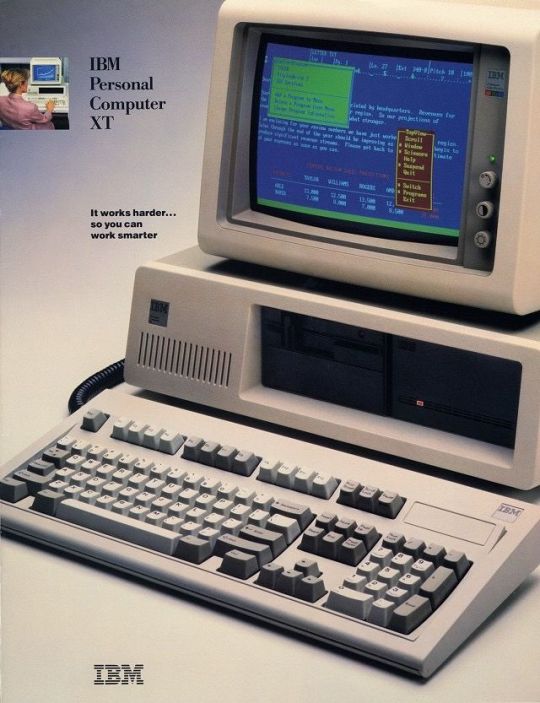
IBM PC XT
512 notes
·
View notes
Text
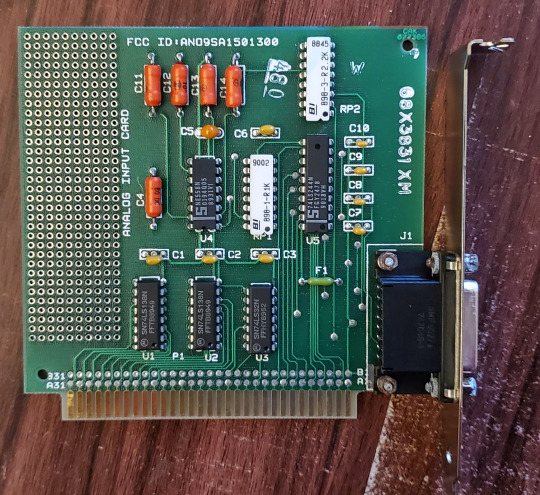
IBM Analog Input Card, aka the original ISA joystick port option
32 notes
·
View notes
Text

Occasionally getting old hardware working is less than elegant
24 notes
·
View notes
Text

Pencept PenPad 200 on IBM PC XT (1983)
251 notes
·
View notes
Text


IBM pC 5150B On THe LEFT: 512k rAm, with cgA AnD hErcULEs vidEocaRds, 5151 mONitor. oN tHe RiGHt iS: XT turbO (10MHz) CLOnE WitH hERcuLES anD CGA GRAPhics CardS, 640K RAM, AdLib sOUnd, 5153 mONiTor, NEtWorK CARd fOR inteRneT/TeLNet Bbs ACceSs, 20MB ST-225 Mfm haRD DiSk.
506 notes
·
View notes
Text
PolType/Cyfronex
Polish PolType is a family of microcomputer systems developed by Polish engineers in close cooperation with the Polish representative of the British MonoType company (PolType was acquired by the Cyfronex company in 1986, but the original developers remained with the company).
PolType devices were able to control LaserComp and MonoType Imagesetter machines (Imagesetter produces the printing film from which the printing plate is made – nowadays the plate is made directly, and the film is not needed).
The first generation of Poltype (1988) required its own eight-bit computer, the next, Poltype 03 and 04, used a PC XT class computer.
The 510-key POLSET 04 keyboard (for PolType 04) shown in the picture below was also Cyronex's own development. This was also excellent for typing complex mathematical formulas, but through it the functions of the SW were also available (the mouse and WYSIWYG were still in a very experimental stage at that time)

510-key keyboard for the PolType 04 system.
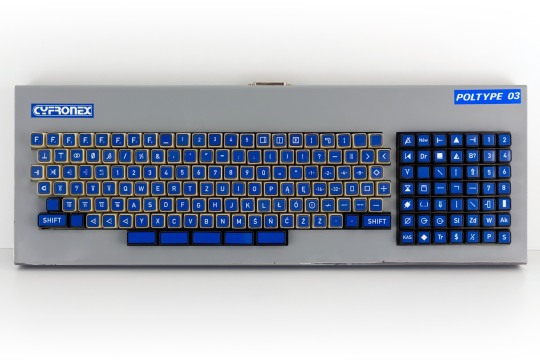
The keyboard of PolType 03 (this system already used IBM XT machines)
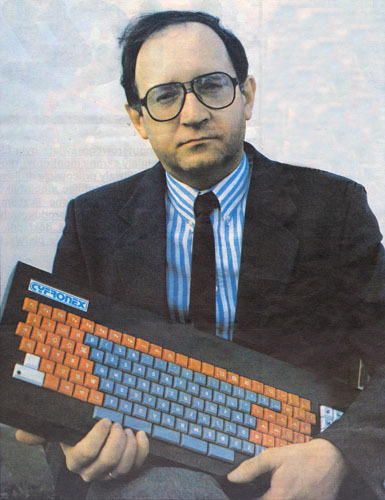
Jacek Sobczyk, co-owner of the company Cyfronex with PolType 03 keyboard (this one also has more buttons than what we are used to)
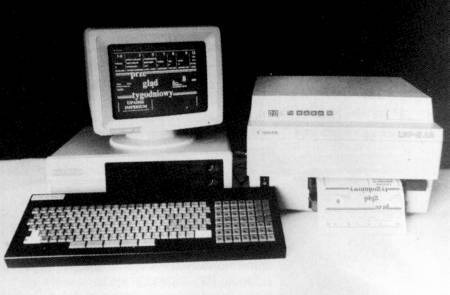
Cyfronex // PolType 03 system
source:
• Tumbler // sailing the cylindrical sea
• Mikro Klan 1988/1
• Bajtek 1988/5
Check these out too if you are interested in retro computing
131 notes
·
View notes
Text
here's a question I'm not sure this is the best place to talk about:
if you were going to build a set of DOS/windows machines to play ALL PC GAMES, how many would you need?
Like, the boring answer is "ONE" but that's terrible and no, not really. Yes you can run DOSBox and such on a modern computer, but there's plenty of games in the hard-to-emulate era where they just won't run on a modern computer without a lot of patching and hacks and even then, maybe not.
So a slightly less boring answer is "TWO": One for the Hard To Emulate Era and one for NOW-GAMES. So like a 600mhz Pentium III with a Voodoo 3 and Windows 98, and a Modern Boring Machine. You play nearly everything on the modern one, including DOS games (using DOSBox and similar), but games that fit in the hard-to-emulate era, you play on the Old Machine.
BUT if you want to have a set of computers for most of the eras of PC gaming, you need more than that. Like if you were populating a museum of PC games. How many? I'm gonna say... FIVE. Maybe SIX.
An IBM XT. This is the best system for the earliest era of PC games: booters, early DOS games, anything without speed control (yes, there are turbo buttons, but they can only do so much). This is like an 8mhz with a 20mb hard drive, 640kb of ram, PC speaker only. You definitely need a joystick.
High-end 486/Pentium. This will play the rest of DOS games and nearly all Windows 3.1 games. 16mb of RAM is more than enough. A hard drive of about ~500mb (one of the first size limits), a soundblaster and maybe a GUS or MIDI device. You'll need a CD-ROM drive, for sure, even though most games won't need it.
Pentium II/III, or an AMD K6: Most early Windows games from the windows 9x era. You'll need a PCI sound card and a 3DFX card, probably a Voodoo 3 or above. You could go with an early nvidia like a geforce 2/3, but then you don't get GLIDE games. Something like 128mb of RAM, a couple gigs of hard drive, nearly all games will be CD-ROM so you want something FAST, and probably an old copy of Daemon Tools/CloneCD and a pile of no-CD cracks, because that will be NOISY.
Late single-core era: Pentium 4 or AMD Athlon 64. This is for the games that are relatively recent (2000s and onward) but have compatibility reasons that make them not run well on modern systems, because they don't handle multi-core systems, 64bit windows, or windowses newer than XP. So obviously this is going to run Windows XP, maybe tweaked Vista at a push, and it will 100% be the 32bit version. You're gonna have like 1-2 gigabytes of RAM, a few hundred gigabytes of hard drive space to a terabyte, and a video card like a GeForce 8-series or a Radeon HD 3000.
Boring modern machine. Fastest CPU/GPU, most RAM, biggest HD, etc that you can afford. Run Windows 10 or 11, it doesn't matter.
And the only reason I say "five or six" is because you might want to stuff another computer in, call it PC 3.5: Basically a fast Win9x machine, but this one uses an nvidia/ATI GPU instead of a 3DFX GPU. This'll be a machine for high-end Win9x/ME games that need more graphics power than a 3DFX card can manage, but don't work on an XP machine. I don't know for certain there are games in that area, but I wouldn't at all be surprised.
143 notes
·
View notes
Text
Other Sides of the Coin
That phrase is the guiding philosophy for my computer collection: lets unpack it.
First off, I've been around PC's all my life. While I don't remember it, the family's XT clone, then a 486 and onwards. I know PC's in and out. While they are fascinating machines in their own right, they aren't the only computers out there.
So what is out there? Many systems, all shapes and sizes, commercial and enterprise machines that never see the light of day until they are scrapped and the consumer machines meant for the home. For me the commerical and enterprise machines don't hold that much allure, they are curiosities for sure and one of two of them may find their way into my collection but that's for later. I focus on consumer machines currently.
But wait, there are many of those machines!? How do I keep myself from drowning in silicon and rocks we tricked to think?
Representatives.
You'll see this more in the earlier systems that had a vast array of systems that either competed with the example in my collection or preceded it. CP/M systems were many in a vibrant competitive ecosystem, I simply cannot own an example of every kind that is out there, so instead I settle on a well known unit and say it represents what the other units are.
Lastly, I sort the collection into bittiness and while my decisions are arbitrary and subjective, there is method behind them:
8 Bit Systems: Everyone will think of systems like the C64 but I also class systems like the PC/XT and the TI99/4a in the same category.
Limited color palettes and sounds
expectation to load software from 5.25" disks, cassette tape or cartridge ROM's.
BASIC in ROM.
Majority of the IO or internal operations done in 8 bits.
Limited RAM to 1MB or less.
Examples in my collection:
Commadore C64/C128
IBM PC/XT
Apple IIeP (Representative for the Apple II line)
Kaypro 4-84(Representative for the CP/M ecosystem.)
Texas Instruments TI99/4a
Timex Sinclare 1000
Missing:
Atari 8 bit. :(
16 Bit Systems: Here the lines start to blur and you'll see why.
Enhanced colors and sounds
Expected to load software from hard drives and 3.5" disks, gone are cassettes and cartridges for computers.
Faster CPU's
Majority of the system conducts itself in 16 bit operations.
RAM expanding above 1MB.
Expected to run GUI's
Examples:
Commadore Amiga 1000
Atari ST520
Apple IIgs (16 bit CPU but does everything in 8 bits)
Apple Mac Plus
IBM PC/AT (HA)
Clone PC/386 (full 32 bit CPU but all IO is 16 bits)
32 Bit Systems (Early)
Why do I say early? The 386 is a 32 bit CPU, but it's in the 16 bit category. And to that, I say the 386 didn't have a standard 32 bit expansion slot for it to use, a CPU like the 486 had two.
High color resolutions, and high fidelity sound capabilities.
Hard drives are standard equipment now.
CPU's pushing mid double digit speeds.
Multiple megabytes of RAM are expected
GUI's and multimedia.
CD-ROM is the new hotness
Examples:
Gateway 2000 4dx2/66V
Apple Performa 630CD
Missing:
Commadore Amiga 2000/3000
Atari Falcon
32 Bit Systems (Late)
At this point we are seeing the foundations of the modern computers as we know them today.
Unlimited Colors and Resolutions
Hard drives pushing dozens of gigabytes
RAM in the hundreds of Megabytes
Advanced CPU's with SIMD instructions running at several hundreds of Mhz.
Advanced OS's
Examples:
Compaq Deskpro EN866
Apple Imac G3(750)
Missing:
To be decided
The tail end:
Here the lines blur to the point it's difficult to call, so it's here where I plant the end of my collection, at least for now.
The modern computer as we know it has been invented and we start to shed the legacy of decades of computers that came before them. It is here that the coin has become flat. Apple is still doing their own thing with the Power PC's but will soon drop them in favor of x86. Intel is scratching it's head at the Pentium 4, AMD is ruling the roost with it's wildly successful Athlon processor.
There may be a home for systems in this era in the future as memories coalesces into nostalgia. There is already a root forming with two systems that blur the late 32 bit system lines, a Pentium 4 XP box and a Sawtooth G4.
Perhaps I'll get a G5. That would really blur the lines.
Thank you for reading.
Here is were I will put my wish list. Some of these systems are my biege whales, I would love an Amiga 4000T but at the costs of these machines, it is unlikely without shelling out as much as a decent used car.
Commadore Amiga 4000T
This machine doesn't have a direct comparison with either a PC or a Macintosh, but there are contemporary machines that would be added to the collection with it.
IMSAI or Altair 8800
Mostly for it's front panel toggling goodness. I'd reasonably be just as happy with something like a modern clone for me to twiddle the switches but still have something usable afterwards.
#retro computing#old computers#apple computers#cbm#pc#commodore amiga#atari#collection#philosophy#nostalgic#so nostalgic it hurts
16 notes
·
View notes
Text



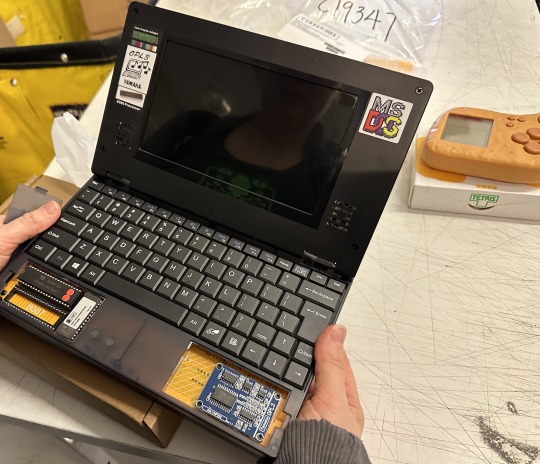
DOS computer! " Book 8088 DOS system laptop computer CGA graphics card IBM PC XT compatible machine 8088 8086CPU microcomputer"
21 notes
·
View notes
Text

he identifies as an IBM 5160 PC XT

image source
10 notes
·
View notes
Text
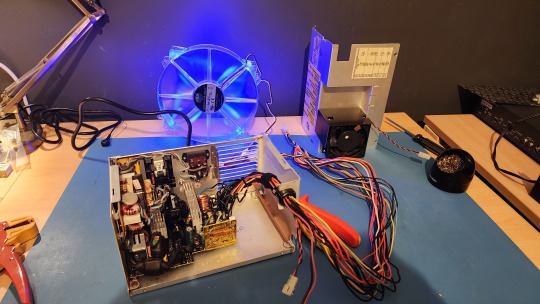
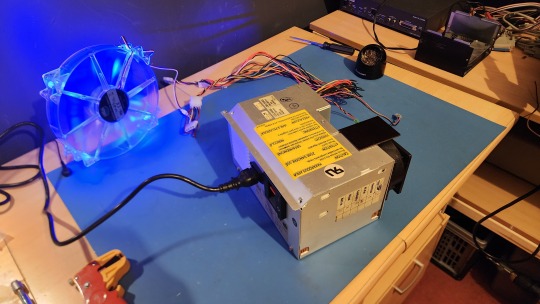
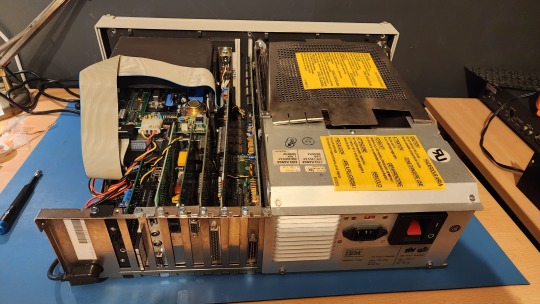
Fixed up my IBM 5155 Portable PC...
The PSU is now a modern Corsair CV450 in disguise, since I had so many problems with the original one.
I've also upgraded the crap out of it, including an 8 MHz Turbo XT motherboard, an NEC v20 CPU, ATI EGA Wonder 800 (Has mono composite video output that the built-in CRT takes), a dialup modem, XT IDE CF card, reproduction Adlib sound card, AST Sixpak Plus, and a Hercules video card for 80s dual monitor goodness.
I've thrown as many fancy XT upgrades as I can fit inside this thing.
Not bad for something I got in an unknown non-functional state, and the keyboard is a portable version of the IBM Model F which is my favourite keyboard I've ever typed on.
28 notes
·
View notes
Note
Top 5 worse computers from the 80s
While I'm sure someone could come up with a more definitive well-curated list, here's what I came up with on a whim:
Sinclair ZX-81
The ZX-80 was a good, inexpensive step forward for the burgeoning UK computer market. Its successor, the ZX-81, tripped and fell rather than do anything beyond streamlining it for mass production. A real pain in the ass to type on, and notoriously flaky to do any serious work on. Localized in the US as the Timex-Sinclair 1000, it was too weak to really compete with the American market. British users seem to like them but I'd chalk up most of that to nostalgia goggles.
Apple III
Apple tried and failed to make a business machine, and Jobs got his way a bit too much, and it overheated alot because he mandated that it couldn't have a fan. Ultimately, it confused people and was surpassed by better Apple II's. A weird footnote in Apple failures.
IBM PCjr
The answer to a question that nobody asked. Crappy wireless keyboard, intended to be bolted to your home television. Cartridges? On an IBM? WTF is that? The expansion options are hot garbage. Eventually it was upstaged by the Tandy 1000 at its own game. Just get a PC XT. Or a Tandy.
Coleco Adam
Likes to erase its own tapes if you leave them in the drive on power-up due to an electrical surge it shoves through the tape mechanism. The main system power supply is integrated into the printer, so you NEED the chonky printer to be plugged in for it to work. Has those weird phone pad + joystick hybrid controllers. Just get a ColecoVision to play your cartridge games.
Commodore Plus/4
I was going to take a stab at the MAX Machine, but Commodore did worse with the whole concept of the Plus/4. This thing was too cheap for its own good, and went in a completely bonkers direction at the behest of Jack Tramiel. It's supposed to be a cheap business machine to eat the ZX Spectrum's lunch. Why go after the little guy from the UK market? Who knows. Lame rubber chiclet keyboard, totally incompatible with existing Commodore software and most peripherals, and having 121 colors can't save it from being a dumb idea. Apparently it was a hit in eastern Europe.
Remember, pretty much every system has its fanclub, regardless of how flawed, underpowered, or limited a platform it is. So while I personally don't care for any of these machines, if you're mad at me for taking a pot shot at your favorite, do keep in mind that my favorite computer of all time is the VIC-20. You know, the one that most Commodore enthusiasts ignore for only having 5K of RAM having only 8 foreground colors, only 22 columns of screen resolution, and just not being a C64.
23 notes
·
View notes
Text
State 89

Three-dimensional scene based on videogame Interstate 76. It is excellent game about car theme. With shooting. In genre of combat racing. Open space. Story style of action movie 70s-80s. Excellent 3d graphics, which easy to start with 486 Dx2 computer. Later it was a versions 3DFX of this game. Ride a car about free space. And shoot.
And this is my three-dimensional scene based on this game. Style of retro action movie. I remember a square based graphics of Interstate 76. It is such a firm style. I have done it much more simple way. But something like the way – characters of this game. It was a Groove Champion, character in game. I dedicate it to Groove Champion. As I can say. And car Lincoln or Jefferson. As I remember, it is Jefferson. I like a lot this car. So, you can select a game mode – ride a desert. At any car, if I am right.

Let’s move to 1989. Very end of 80s. Style of retro action movie. Retro graphics. Retro characters.

Somewhere in desert. It is going a stylish car. Yacht on wheels. Desert. It is hot in day. And cold at night. Though all the desert it is going one single car.

Racer Disco is going to a secret point. Point of meeting. Disco with nickname at the road track – master. Disco Master, also, a policeman, which investigation a strange car modifications. Strange car transporting. Someone here is moving cars, take a race, makes wrong modifications. Dark story.

Early at the morning. Sun is only starting. It is yet cold. He takes his pistol. And he has reached the house. Amongst the desert. Somewhere, computer master is waiting for him. He will show him with newest computer Ibm pc xt new variations of the car. And help to modify car for a race. With building into it a computer. But it is good to be careful. Opponents can to know about this. It is very dangerous!
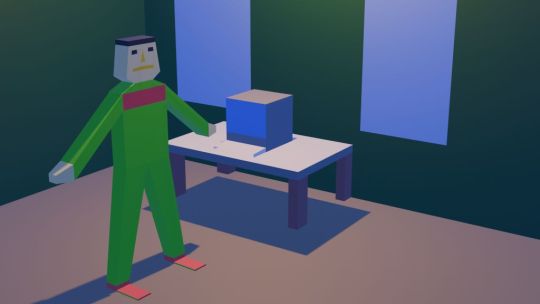
In a little house. Computer master is waiting for a long time. Hesitation. And paranoid. It is better to finish it faster. Nothing to do. Program is already written. Loaded to a diskette. It is good to make a debug and install into Disco`s car. And that’s all. Disco can win the race. And to get to know what is wrong with other`s modifications. It is good to press Enter and go into State 89. Secret car modification. Computer and machine - no one see this before.
It helps to know what is going on. And catch intruders.

Dima Link is making retro videogames, apps, a little of music, write stories, and some retro more.
WEBSITE: http://www.dimalink.tv-games.ru/home_eng.html
ITCHIO: https://dimalink.itch.io/
GAMEJOLT: https://gamejolt.com/@DimaLink/games
BLOGGER: https://dimalinkeng.blogspot.com/
#retro game#90svideogames#3dfx#486 dx2#voodoo 2#svga#low poly#3d model#blender#80s style#3d art#interstate 76#lincoln#jefferson#car#car combat#racing#desert#road#computer master#disco#ibm pc#pc ms dos#ms dos#racer#car modification#action movie 80s#shooter#3d action#groove champion
5 notes
·
View notes
Text
IBM PC XT - «расширенная технология»
8 марта 1983 года корпорация IBM выпустила знаменитый компьютер IBM PC XT. Читайте его историю в нашей новой статье!

2 notes
·
View notes
Text

IBM PC XT
Photo by Mamotreco. Shot on Fujifilm X-T4 & 50mm f2 prime lens.
Check out my YouTube channel and my music on Bandcamp
#fujifilm#fujifilm x series#fujilove#fujixt4#fujixweekly#fuji xt4#fuji x weekly recipe#fujixseries#fujixlovers#fuji#fujinon#fuji x series#fuji camera#fujifilm xt4#fujifilm x-t4#vintage electronics#retro computing#computer#old computer#computing#computer history#home computer#personal computer#8-bit#8bit#16bit#16-bit#ibm
12 notes
·
View notes
